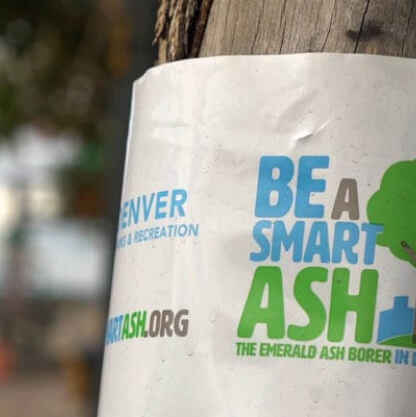“Loud” extends into social media, too

As a working mother, noise has many connotations. And it finds me daily: kids yelling throughout the house while chasing the dog, screams of joy while visiting an adventure park, enjoying the rhythms eluding from an evening concert, my colleagues telling jokes in the office and maybe even the neighborhood barking dog at 2 a.m.
But sometimes the noise can happen silently and you don’t “hear” it right away. A customer has a bad experience in your restaurant, the manager on duty doesn’t handle it effectively and within minutes of leaving, the customer posts an overtly negative comment to your Facebook page that triggers an explosion of additional posts.
Once a negative or an out of the ordinary online comment is discovered through the social media monitoring process, you have to decide whether or not to respond to it, and if so, how. Generally speaking, posts should be reviewed on a case-by-case basis to figure out whether to leave the matter alone, respond publicly on the social media platform, reach out to the individual to request the conversation be taken offline, or attempt to have the post removed as inappropriate.
Oftentimes, a negative commenter can be put to ease by reaching out directly and offering to discuss the author’s concern offline through direct messages or via email. Other times, the negative comment may warrant a public response in order to clear up misinformation and to show transparency. And finally, sometimes it is better not to respond at all because the negative comment is so off base and inflammatory that responding will likely only fuel the fire of an irrational online customer.
As a best practice, GroundFloor Media recommends that organizations develop a social media crisis response plan. The plan really provides the social media team, marketing/communications team, leadership and agency partner(s), with a solid roadmap to assist in evaluating and determining the most appropriate response and the method. Two critical criteria to consider when identifying a negative issue or potential crisis are:
1. How “loud” is the comment?
The Internet is a BIG place, and without some filters too much time could be spent addressing people with negative issues or comments on social media platforms. A question to ask when considering whether or not an issue could potentially grow into a larger negative problem is: how much “noise” is being made about this particular topic? Questions to ask:
- Is the comment on a blog with 30 followers or a YouTube channel with 150,000 viewers?
- Was the comment/post shared or repurposed to other social platforms/networks?
- Is the comment damaging to your brand?
- Would customers, employees, etc., find the post/comment offensive?
- The “louder” the conversation, the more likely you should respond.
2. What is the tone/topic?
- If the tone is not overtly negative toward your brand, product or services, it may not need to be addressed.
- If the tone is overtly irrational, it may be best to not incite the individual who made the comment.
- If a complaint can be dealt with rationally, an offer should be made to discuss the situation with the commenter directly, preferably offline.
- If the comment involves someone’s personal experience and may include personal or private customer information, the response should be taken offline immediately.
Because of the viral nature of social media and the fact that it occurs in real time, it is important that any potential negative situations be dealt with as quickly as possible. By detailing your organization’s criteria to evaluate a potential negative issue or potential crisis in the social media response, you and your team will be more efficient as you navigate through what the best response plan is for the online comment at hand.
 As a working mother, noise has many connotations. And it finds me daily: kids yelling throughout the house while chasing the dog, screams of joy while visiting an adventure park, enjoying the rhythms eluding from an evening concert, my colleagues telling jokes in the office and maybe even the neighborhood barking dog at 2 a.m.
But sometimes the noise can happen silently and you don’t “hear” it right away. A customer has a bad experience in your restaurant, the manager on duty doesn’t handle it effectively and within minutes of leaving, the customer posts an overtly negative comment to your Facebook page that triggers an explosion of additional posts.
Once a negative or an out of the ordinary online comment is discovered through the social media monitoring process, you have to decide whether or not to respond to it, and if so, how. Generally speaking, posts should be reviewed on a case-by-case basis to figure out whether to leave the matter alone, respond publicly on the social media platform, reach out to the individual to request the conversation be taken offline, or attempt to have the post removed as inappropriate.
Oftentimes, a negative commenter can be put to ease by reaching out directly and offering to discuss the author’s concern offline through direct messages or via email. Other times, the negative comment may warrant a public response in order to clear up misinformation and to show transparency. And finally, sometimes it is better not to respond at all because the negative comment is so off base and inflammatory that responding will likely only fuel the fire of an irrational online customer.
As a best practice, GroundFloor Media recommends that organizations develop a social media crisis response plan. The plan really provides the social media team, marketing/communications team, leadership and agency partner(s), with a solid roadmap to assist in evaluating and determining the most appropriate response and the method. Two critical criteria to consider when identifying a negative issue or potential crisis are:
1. How “loud” is the comment?
The Internet is a BIG place, and without some filters too much time could be spent addressing people with negative issues or comments on social media platforms. A question to ask when considering whether or not an issue could potentially grow into a larger negative problem is: how much “noise” is being made about this particular topic? Questions to ask:
As a working mother, noise has many connotations. And it finds me daily: kids yelling throughout the house while chasing the dog, screams of joy while visiting an adventure park, enjoying the rhythms eluding from an evening concert, my colleagues telling jokes in the office and maybe even the neighborhood barking dog at 2 a.m.
But sometimes the noise can happen silently and you don’t “hear” it right away. A customer has a bad experience in your restaurant, the manager on duty doesn’t handle it effectively and within minutes of leaving, the customer posts an overtly negative comment to your Facebook page that triggers an explosion of additional posts.
Once a negative or an out of the ordinary online comment is discovered through the social media monitoring process, you have to decide whether or not to respond to it, and if so, how. Generally speaking, posts should be reviewed on a case-by-case basis to figure out whether to leave the matter alone, respond publicly on the social media platform, reach out to the individual to request the conversation be taken offline, or attempt to have the post removed as inappropriate.
Oftentimes, a negative commenter can be put to ease by reaching out directly and offering to discuss the author’s concern offline through direct messages or via email. Other times, the negative comment may warrant a public response in order to clear up misinformation and to show transparency. And finally, sometimes it is better not to respond at all because the negative comment is so off base and inflammatory that responding will likely only fuel the fire of an irrational online customer.
As a best practice, GroundFloor Media recommends that organizations develop a social media crisis response plan. The plan really provides the social media team, marketing/communications team, leadership and agency partner(s), with a solid roadmap to assist in evaluating and determining the most appropriate response and the method. Two critical criteria to consider when identifying a negative issue or potential crisis are:
1. How “loud” is the comment?
The Internet is a BIG place, and without some filters too much time could be spent addressing people with negative issues or comments on social media platforms. A question to ask when considering whether or not an issue could potentially grow into a larger negative problem is: how much “noise” is being made about this particular topic? Questions to ask:



